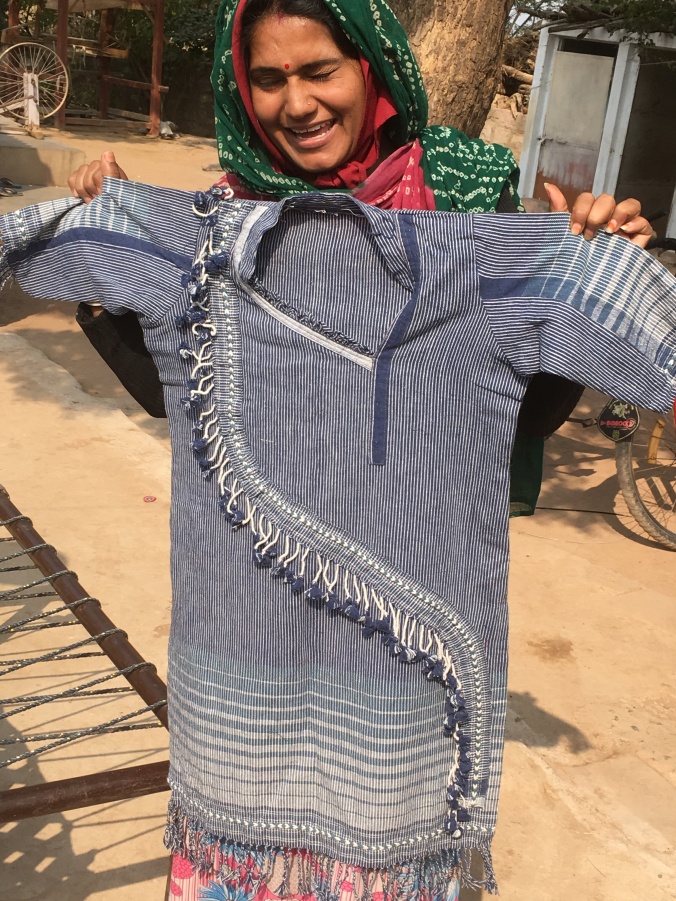The weaver's hospitality
On my last visit to Bhuj in 2016, my friend and local guide, Kuldip, took me to meet a weaving family in the tiny village of Bhujodi not far from Bhuj. Friends may remember seeing me wearing one of my favourite shawls in the winter: a handwoven brown and black wool number with little tassels on the ends. This was made by Babubhai, the weaver about whom I now write. When I arrived in 2016, Babubhai was in the middle of dying some thread green using the leaves of a tree near his house.
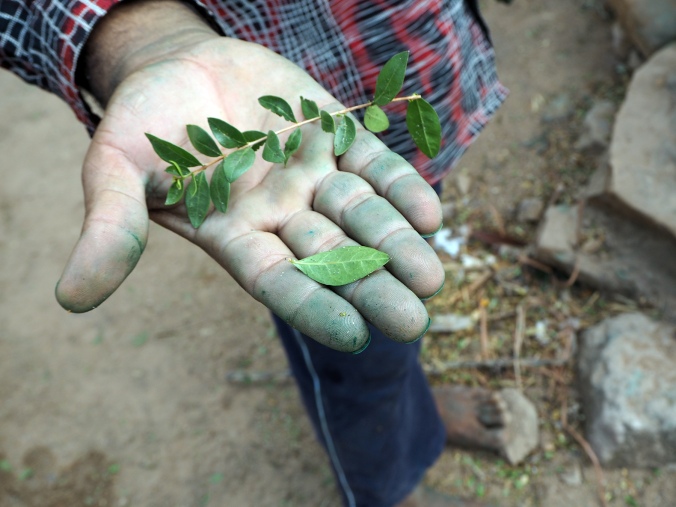
Babubhai’s hand with the source of his green dye
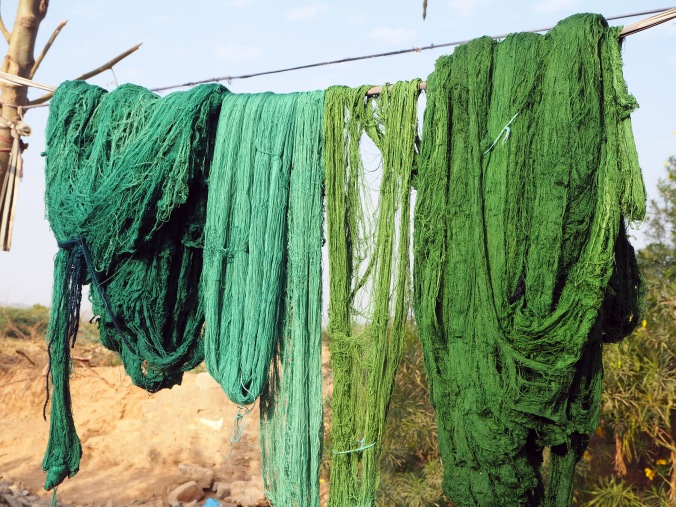
Shades of green drying in the sun.
Now, in 2017, I have brought my tour guests to visit Babubhai. We were greeted by his family and given demonstrations of spinning yarn and preparing the warp threads for the looms by two of the ladies, while Babubhai finished helping a neighbour with dying his thread.
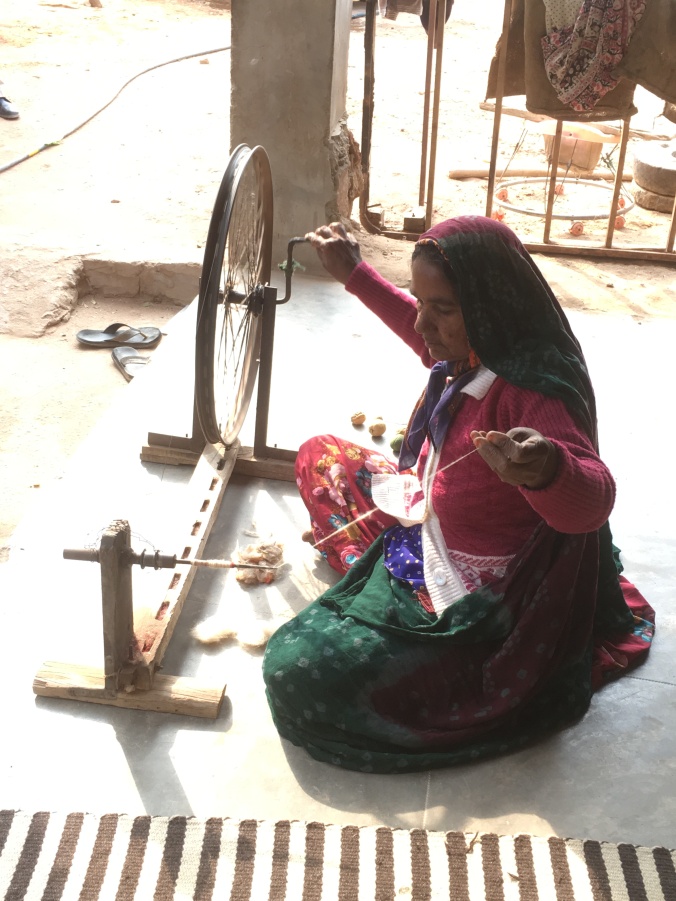
Spinning demonstration using a hand turned variation on a bicycle wheel.
When Babubhai arrived, he demonstrated several different weaving styles: mushroo, a kind of satin weave with silk thread on the surface of the fabric and cotton on the reverse; and supplementary warp where motifs of a different coloured yarn are introduced to the cloth. Both look very difficult, with the mushroo loom having seven foot pedals which the weaver’s feet use to govern the various threads in a complicated dance as his hands do something else.
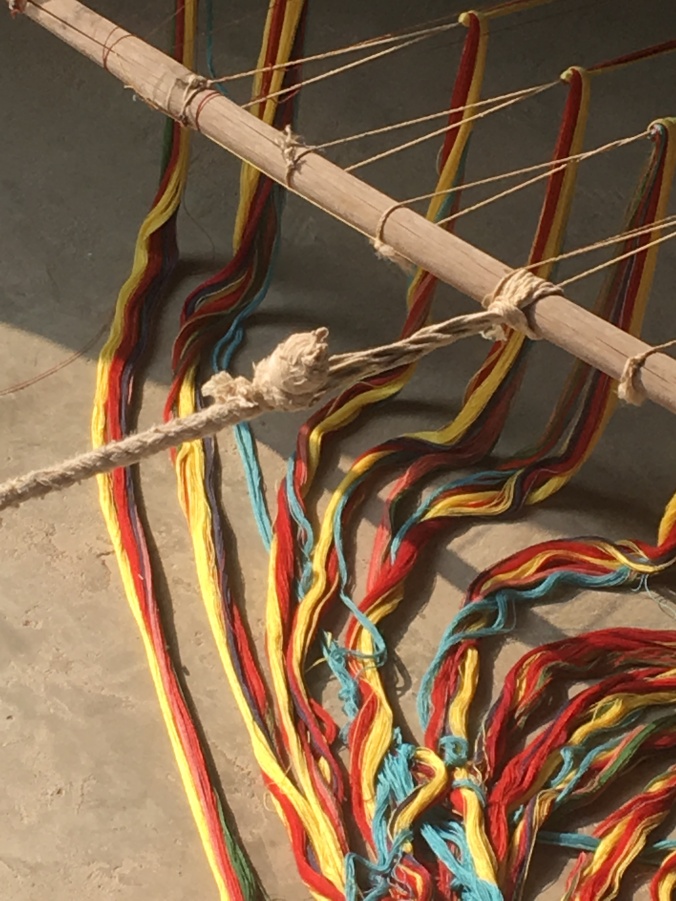
The warp threads on the mushroom loom.
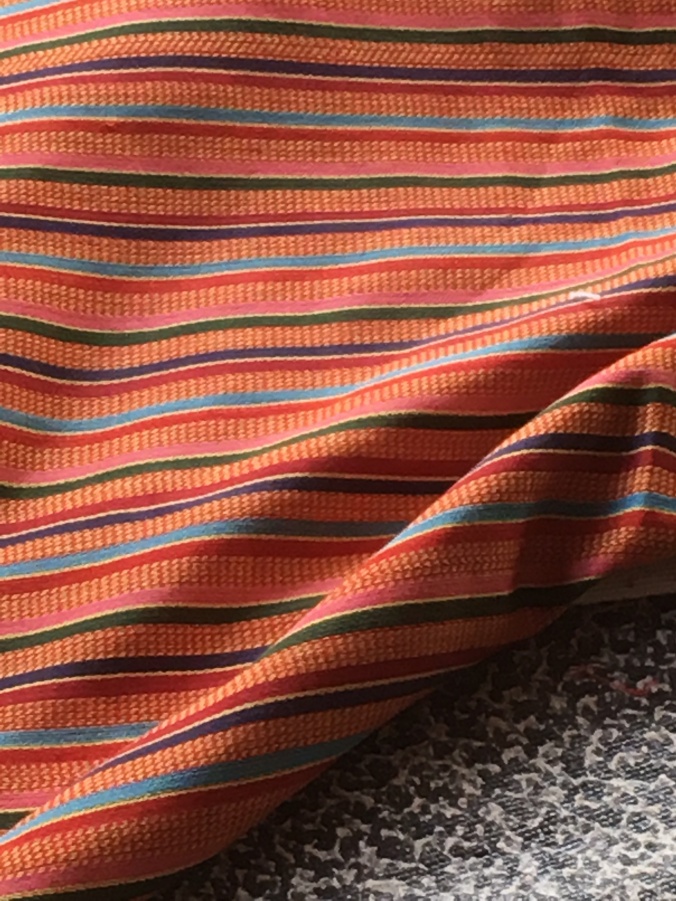
Finished mushroo fabric.
This unassuming address at the end of dusty lanes through scrubby bushland produces amazingly beautiful textiles. We were shown some family archival pieces as well as some recent products, one piled on top of the other in a dizzying display as we tried to decide which ones we could not live without. It is such a treat to be able to buy directly from the talented makers in their home and working environment.
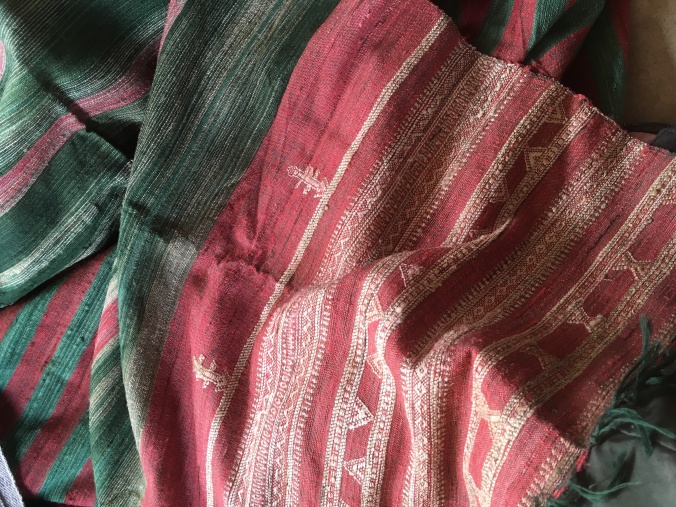
A superb silk shawl with supplementary weft design.
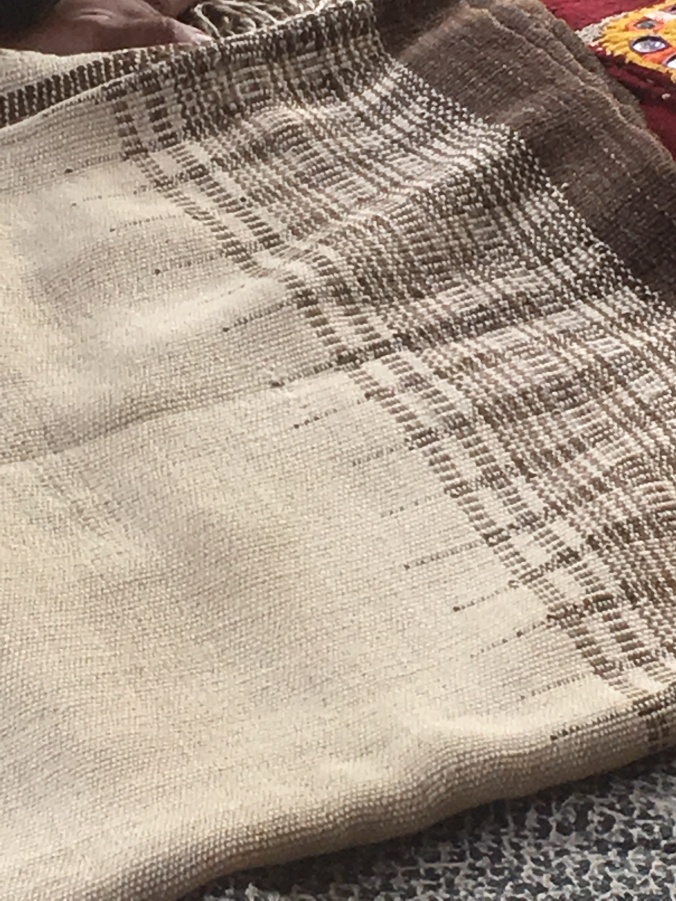
A family heirloom piece with a complicated design.
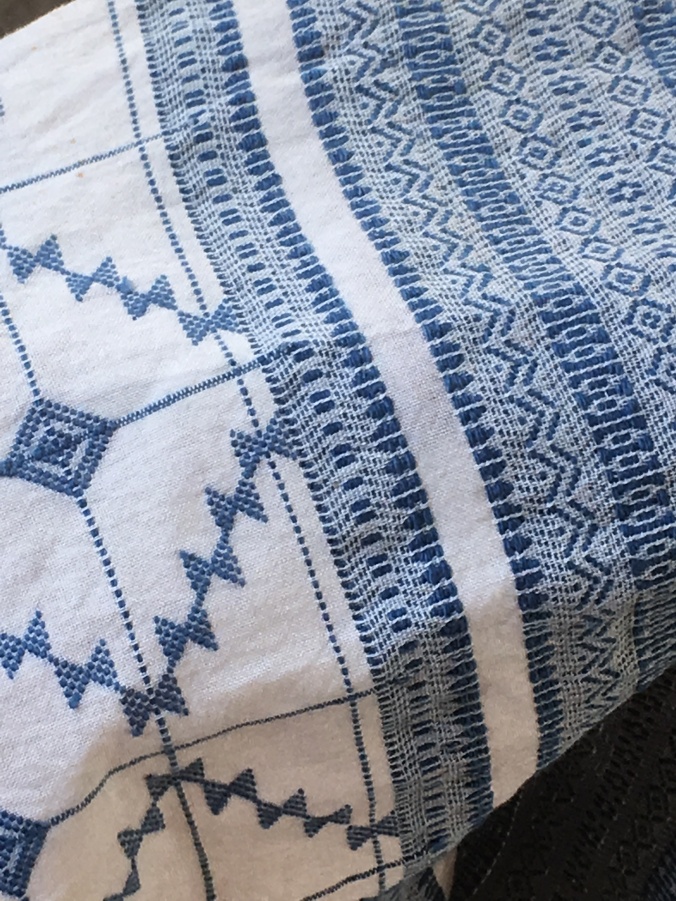
Another supplementary thread piece in indigo dyed thread
When the buying frenzy died down, we were invited to share lunch with the family, and it was with much gusto (shopping works up an appetite) that we tucked into some healthy village food prepared by Babubhai’s wife in her tiny kitchen.
After the meal, some rustic handmade musical instrument were produced and we were treated to an impromptu performance of some holy songs. Babubhai ‘s brother kicked it off playing a long-necked stringed instrument he had made, our host joined in on the jaw harp, and then a young boy ran up with first a clay water pot tightly covered with damp cloth and then an upturned bashed up metal bowl: an improvised tabla. Sitting in a semi-circle, all the musicians joined in the singing as we watched on, mesmerised by the music and our full stomachs and amazed at the generosity and talent of these gentle people.
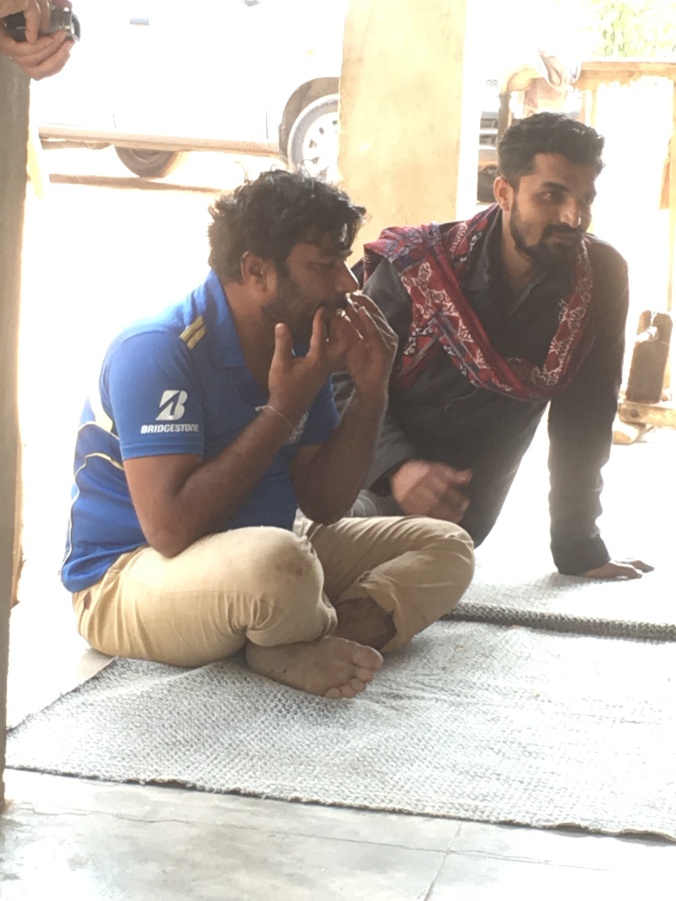
Babubhai playing the jaw harp with our guide Kuldip behind.
A late surprise: just as we were preparing to leave, Babubhai’s nephew’s wife was encouraged to show us her creation. It is usually the men who carry out the weaving here, but Rasilaben had shown great skill and creativity with the looms. But it was the next step she took that had us really amazed. With no design training at all, she had taken a length of her exquitely woven cloth and turned it into a totally new design for a dress. She pairs it with wide handspun white cotton pants. A really beautiful and creative design. 